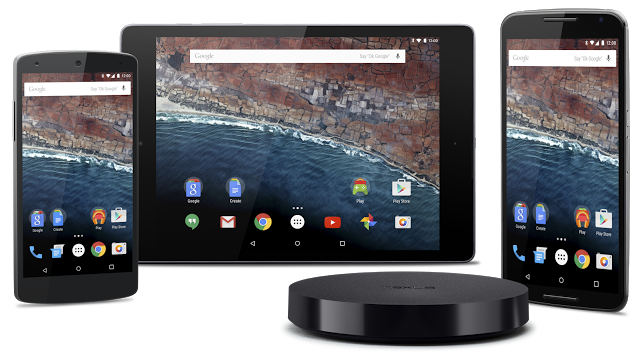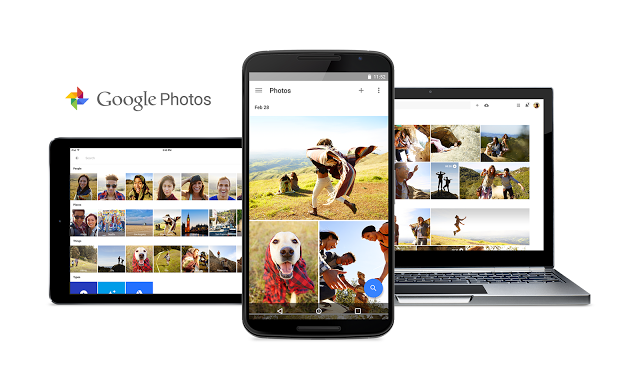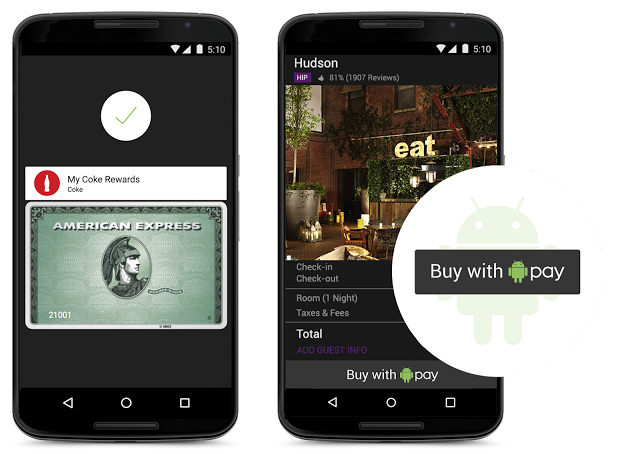Google I/O’s keynote address has come and gone, and as expected the Californian company has announced a wide range of new features and services. That includes Android M, the next version of Android, and new services like Google Photos, Project Brillo and Android Pay. Let’s take a look at the biggest headlines!
Android M
We didn’t get a full name for Android M, but we did learn some exciting new things about the new OS on top of the usual mantra of bug fixes and security improvements. Here are some of the biggest new features:
- Google Now is getting much smarter, with Now on Tap. The feature is activated when you hold the home button in an app, and automatically pops up Now cards with relevant information at the bottom of the screen. For example, If someone texts you about seeing a movie, you’ll get cards for booking tickets, viewing a trailer or checking IMDB. The feature is fast and eerily clever, a continuing theme of Google’s efforts in this space.
- App permissions are getting more granular. Normally when you install a new Android app, you’re shown a big screen with all of the permissions it needs – camera, microphone, GPS, stuff like that. In Android M, that screen is gone. Instead, you’ll be asked for new permissions as they’re used by the app, ensuring your time isn’t wasted on features you won’t use and you get a better idea of the purpose of each permission request. You can also see a list of all apps that are using a certain permission, like your camera or GPS.
- Battery life and charging have been improved. USB-C is supported in Android M, opening the door for new phones that use the new reversible, bi-directional connector. Standby battery life has also been improved, thanks to a new mode called Doze. The mode uses motion detection to find out when your device is stationary and unused, and then sends the device into a deeper sleep than usual, trading app freshness for up to double the battery life in standby.
- Google Chrome can now be integrated into apps using Chrome Custom Tabs. These themeable tabs can be launched by apps, and have access to your logins, cookies and other data, just like the full Chrome browser. It’s a good balance between the previous two options for developers – coding an in-app browser themselves, or kicking you out to the full Chrome browser.
- Don’t like the new white theme in Settings introduced with Lollipop? You can now choose to use a black theme instead, with a toggle in the Developer Options. It’s a small tweak, but it’s most welcome.
Google Photos
Google is making the most popular (and best designed) part of their Google+ social network into its service. Google Photos offers unlimited photo and video storage, “auto awesome” tweaks, and some incredibly powerful auto-tagging. For example, Google automatically tags people, places and things, letting you see all photos of a given family member, or all photos taken in a given location. The app, available for Android and iOS, looks fast and flexible too.
Project Brillo
Project Brillo is a new operating system for the Internet of Things, providing a common platform for smart objects like refrigerators, locks and light bulbs. The OS, which is built on a stripped-down version of Android, includes support for WiFi and Bluetooth, and should make it way easier for developers of new smart devices and customers trying to ensure their smart devices can work with one another.
Android Pay
Android Pay is the revival of Google Wallet, the company’s largely failed mobile payments system. Android Pay works similarly to Apple Pay, letting you pay for physical goods at 700,000 stores (in the United States only, for now) using NFC. You can also authenticate your payment using a fingerprint reader, if your device has one. You can also use Android Pay to make in-app purchases.
Conclusion
So there we have it – the biggest headlines from Google I/O. What do you think is the most interesting? Let us know your thoughts in the comments below, or tweet us @mobilefun!



Nobody leaves their borders. Yanno what is hilarious? Google Wallet works better on iOS than Apple’s copy of it does lol
Yup, that’s it. Thanks for the discussion :)
Of corse it is failed. Because it is an unusable feature once you leave your precious borders. Visa master card and PayPal can be used anywhere in the world even your money can be exchanged for the local currency. Internationally Google Wallet is a useless lump.
So basically you are going to take the number one mobile payments solution in America, because that’s what it is, and try to diminish it because you’ve got some weird anti-google mental problem. Got it. Thanks for sharing. Really.
Sorry, is this 8% of all Americans? Wouldn’t that be around 25 million users?
Regardless, Apple TV and Google Wallet aren’t exactly analogous. Apple TV can exist as a niche product, as part of a greater ecosystem, whereas Google Wallet kind of relies on a network effect – the more people that use it, the more retailers will support it, and the more useful it becomes. Apple TV doesn’t become better or worse depending on how many people use it, as its content is available on iTunes regardless.
Anyway, I appreciate your enthusiasm for Android Pay, and I hope the service takes off! If it does well in the US, hopefully it’ll make it over the pond as well.
It’s over 60 million users. To put that into perspective, about 20 million people have bought Apple TV. Is Apple TV a failure?
The major issue with Google Wallet was that only one of the major American carriers supported it, which is certainly not what Google had hoped. That put a cap on its growth, but it’s been redressed with Android Pay. 8% is respectable, but for a company with Google’s ambitions, it’s below expectations. It’s not a catastrophe, not a terrible mistake, but I’d argue it was still a failure.
Where is this nonsense that Google Wallet “failed”? comScore showed that 8 percent of Americans are using it. Please correct your story. Now, Apple’s copy of Google Wallet is already a failure.